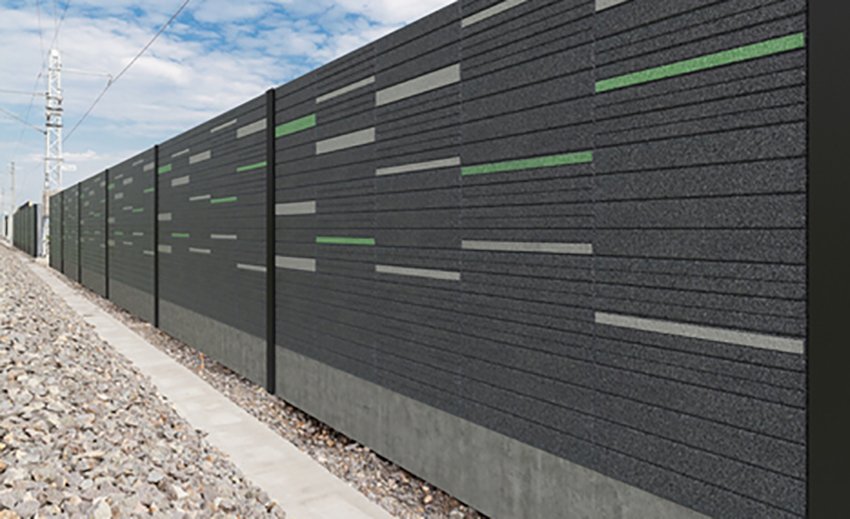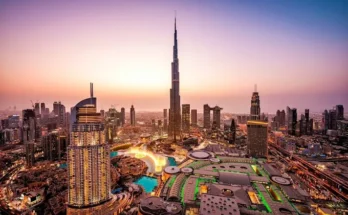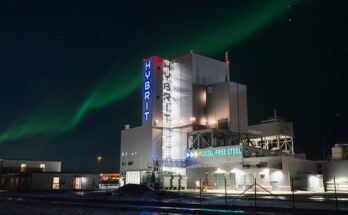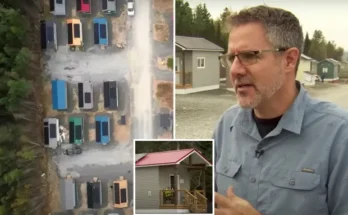In a world where sustainability is becoming a necessity rather than an option, innovative solutions are emerging to tackle pressing environmental challenges. One such breakthrough comes from the Czech company mmcité+, which has developed an advanced noise reduction barrier called “noba.” What makes this project remarkable is its unique approach—using recycled tires to create efficient and eco-friendly soundproofing solutions.

With noise pollution becoming a growing concern in urban and rural areas, particularly along highways and railways, “noba” presents a game-changing alternative to traditional noise barriers. Not only does it repurpose discarded tires, but it also introduces a cost-effective, lightweight, and durable design that benefits both the environment and local communities.
A Sustainable Solution to Noise Pollution
Noise pollution is a persistent issue in modern society, impacting mental well-being and overall quality of life. Conventional sound barriers are typically made of aluminum, concrete, or wood, materials that are either expensive, resource-intensive, or less effective in absorbing sound. However, rubber—an often-overlooked material—has excellent sound-absorbing properties, making it a perfect candidate for noise reduction applications.
The “noba” barrier takes full advantage of rubber’s natural characteristics by incorporating recycled tires into its structure. Each square meter of the barrier contains the equivalent of four used tires, effectively repurposing waste that would otherwise end up in landfills. This aligns perfectly with European regulations, which prohibit the disposal of tires in landfills, emphasizing the importance of a circular economy.
By transforming waste into valuable infrastructure, mmcité+ not only reduces the environmental burden of discarded tires but also provides an effective solution to noise pollution, benefiting communities living near busy roads and railway lines.
Innovative Design with Community Engagement
One of the most exciting aspects of “noba” is its focus on local community engagement. Unlike conventional noise barriers that often appear dull and uninspiring, “noba” allows for aesthetic customization. Local communities can have a say in the design and appearance of the barriers, ensuring they blend harmoniously with their surroundings.
This aspect of the project highlights a crucial shift in urban planning—moving beyond purely functional designs to solutions that enhance the visual appeal of public spaces. By involving residents in the decision-making process, mmcité+ fosters a sense of ownership and appreciation for these sustainable structures.
Cost-Effective and Easy to Install
Traditional noise barriers can be expensive and complicated to install, often requiring heavy machinery and long construction times. In contrast, the “noba” panels are designed to be lightweight and easy to assemble, significantly reducing installation costs and labor efforts.
The durability of rubber also ensures that these barriers have a long lifespan, resisting wear and tear from environmental factors like wind, rain, and temperature fluctuations. As a result, maintenance costs are lower compared to traditional materials, making “noba” a cost-effective long-term investment for cities and infrastructure developers.
A €600,000 Commitment to Sustainability
Developing an innovative product like “noba” required substantial investment and years of research. mmcité+ allocated approximately €600,000 and dedicated three years to perfecting the barrier’s design, ensuring its effectiveness in both noise reduction and environmental sustainability.
This investment underscores the company’s dedication to creating solutions that address real-world problems without compromising on ecological responsibility. By reimagining waste as a resource, mmcité+ is setting a precedent for other industries to explore sustainable alternatives in construction and urban development.
Global Trends in Recycled Rubber Soundproofing
While “noba” is a pioneering project, similar efforts are being explored globally. The use of recycled rubber in soundproofing applications is gaining traction, with various companies testing the viability of rubber-based barriers in different environments. From urban streets to residential neighborhoods, the potential of repurposed tires in reducing noise pollution is becoming increasingly evident.
Cities worldwide are looking for innovative ways to tackle waste management and environmental degradation. The success of “noba” serves as an inspiration for other countries to adopt similar strategies, reinforcing the importance of circular economies and sustainable engineering.
A Step Towards a Quieter, Greener Future
The “noba” noise reduction barrier is more than just an infrastructure project—it represents a significant step towards a sustainable and livable future. By combining recycled materials with functional design, mmcité+ has introduced a solution that addresses both environmental and societal concerns.
As cities continue to grow and transportation networks expand, noise pollution will remain a challenge. However, with forward-thinking initiatives like “noba,” there is hope for a quieter, cleaner world. By embracing innovative technologies and sustainable practices, we can transform waste into opportunity and build a future where infrastructure harmonizes with the environment.
With companies like mmcité+ leading the charge, the future of urban development is looking greener—and quieter—than ever before.



